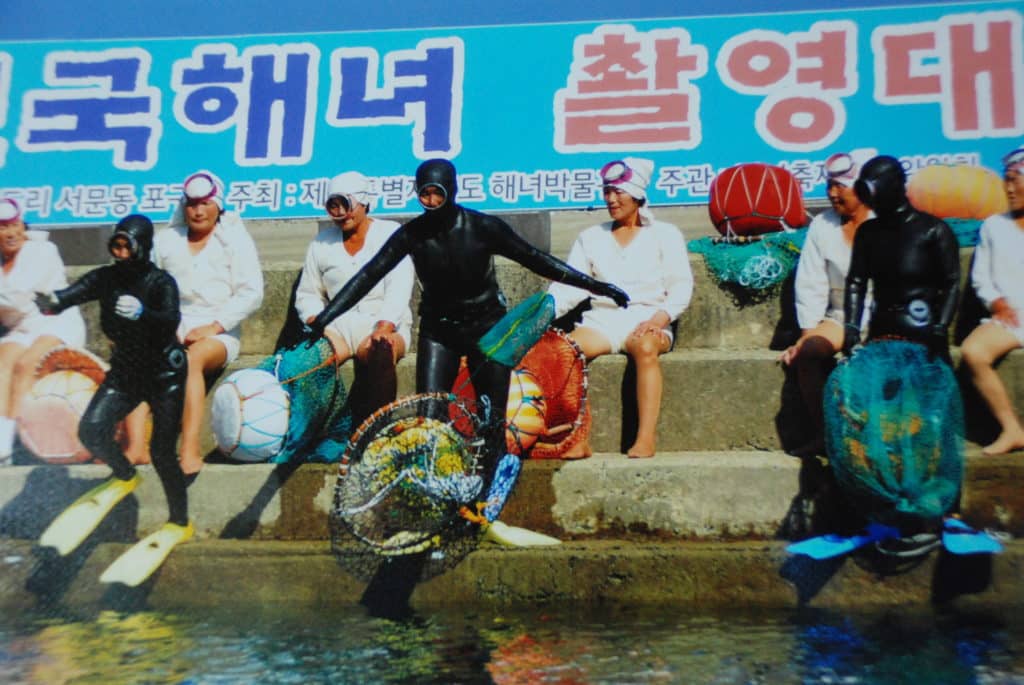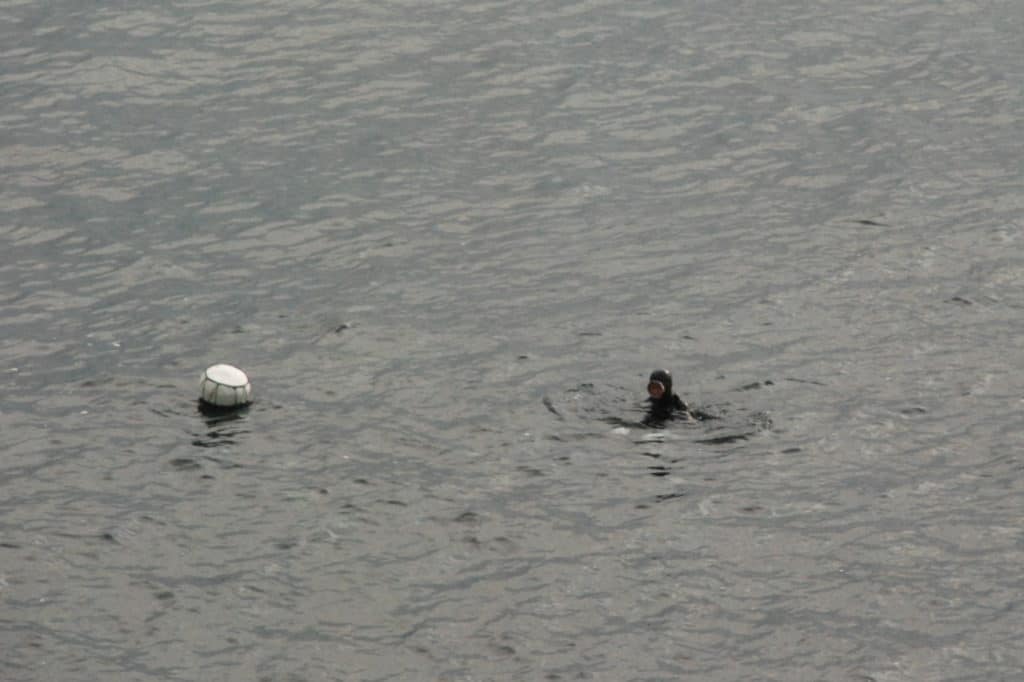Circle the coastline of Korea’s Jeju island long enough and eventually you are likely to come across women decked out in diving gear popping up to the surface now and again. These are the haenyeo—the world-famous women divers of Jeju, keeping alive a centuries-old tradition while maintaining the economic viability of their island home.
Table of Contents
Their Work

They perform the underwater harvest of seaweed, abalone, and shells that is called muljil, which literally means either “water working” or “water playing”. Their work is often divided into three categories: ganmuljil, baenmuljil, and nanbar, according to the distance of the worksite from the shore, as well as the use of a boat.
History of the Haenyeo

The haenyeo originated on Jeju, a volcanic island about 60 miles off the southern coast of the Korean peninsula. Over the years there have been migrations of haenyeo to various parts of nearby China, Japan, Russia, and mainland Korea. These are known as chulga haenyeo, literally “women divers who left home”.
No one knows exactly when the haenyeo began their underwater gathering work, but it is agreed that it started before the Three Kingdoms Period (2nd Cen. AD). Records state that pearls were sent by the islanders to the court in Goguryeo. However, before 1629 the diving was performed by men. Only after this point did the women begin the custom.
The Diving

Najam is the term used to describe unassisted dive fishing to garner shellfish and other marine products from 10 to 20 meters below the surface of the water without using an oxygen tank. On Jeju Island it has been one of the most profitable and productive means for women to contribute to both the local economy and that of each household.
Most haenyeo hold their breath for about one minute, although some are able to remain underwater for up to two minutes. As they come to the surface to breathe, they hold onto a buoy called a taewak, in order to take a brief rest before the next dive.
As she surfaces, the haenyeo lets out a whistle-like shriek exhaling carbon dioxide and inhaling the oxygen necessary for the next submersion.
Haenyeo Happy Hour
After a hard day’s work the haenyeo traditionally meet at the bulteok. This is protected spot close to shore where they sit around a fire to warm themselves, dry out their wet diving clothes, exchange information, and take care of the seafood they collected.

What I saw
I visited the Jeju Haenyeo Museum with a group of my students from English camp at the Jeju International English Village. A few days later, I was in the nearby village of Buckchon-ri where I saw some haenyeo in the small municipal port with their catch. I approach one of them, said hello, and asked if I could take a photo.
“No, no, no.” She responded adamantly, making an x-sign with her hands and turning her back to me.
If you go

The Jeju Haenyeo Museum is located next to the Anti-Japanese Movement Memorial Park about an hour east of Jeju City. Take the bus that goes towards Saeha or Seongsan (Route No. 12) and get off at the Hadoo-ri, Gujwa-eup stop. The museum is open daily from 09:00-18:00, except for the first Monday of the month. Admission is 1,100 Won (about $1 US).
Today Jeju Island is known as Samdado or the “Island of Three Abundances” due to its plentiful supply of rocks, strong winds, and hardy women.
***
Read more about why I’m in South Korea…
 Stephen Bugno has been volunteering, working and traveling around the world for the past decade. This is his second visit to South Korea’s Jeju Island. He freelances for various publications, edits the GoMad Nomad Travel Mag and blogs about his travels at BohemianTraveler.com
Stephen Bugno has been volunteering, working and traveling around the world for the past decade. This is his second visit to South Korea’s Jeju Island. He freelances for various publications, edits the GoMad Nomad Travel Mag and blogs about his travels at BohemianTraveler.com




They are amazing. I don’t know how they do it. Several minutes! Some say it is a dying profession and I can see why but hope the history remembers their strength and their dedication.
Pingback: Ask GoMad Nomad: When to Visit Jeju Island, South Korea | GoMad Nomad Travel Mag
Pingback: 2011 in Review | Bohemian Traveler
Did they pay you for working there or are you one of the many people who have been screwed by the famous Mr Lee who now continues to operate his business after the provincial government revoked his license, and demolished the facility you worked in before?
Hi Bob,
Thanks for stopping to comment. I have heard many stories of people being mistreated and underpaid by Mr. Lee, you are not the first person to mention that. But indeed I was paid after working at his camp, so I can’t mention any first-hand abuses.
Check out more comments regarding that situation: http://bohemiantraveler.com/2010/12/going-to-south-korea/
This illegal English camp has been covered by KBS and 50 newspapers in Korea. He still hasn’t paid me but it looks like there will be some arrests in the near future.
He didn’t pay his chef either, nor the hotel he rented to run the scam camp, or the gas bill leaving children freezing for a week in the middle of winter in their rooms.
http://cafe.daum.net/hojuruku -> (In Korean) but you get the idea. The western news seems to have boycotted the issue.
Luke
Hi Luke,
Thanks for letting us know. You may also want to post your link and message over here: http://bohemiantraveler.com/2010/12/going-to-south-korea/